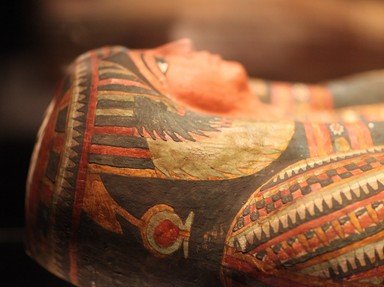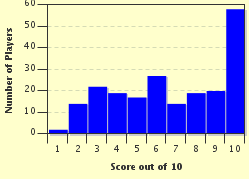Quiz Answer Key and Fun Facts
1. I am called Egypt's first pharaoh and sometimes I am called Menes. Around 3100 BC, I united Upper Egypt and Lower Egypt into one kingdom. Who am I?
2. My contribution to ancient Egypt was hiring the architect, Imhotep, to build a monumental structure to house my remains. He came up with the idea of the step pyramid. Who am I?
3. My Egyptian name means "smasher of foreheads", but I am also known by my Greek name, Cheops. The Great Pyramid was built for me, however, people today aren't sure why. Who am I?
4. During my reign, the second of the pyramids at Giza was built, as well as the Sphinx, which according to legend was made to look like me. I am also known as Chephren. Who am I?
5. My name is Mentohotep II. I was the founder of the Eleventh Dynasty in Egypt, and was the first to be buried in a famous royal cemetery. What was it called?
6. I was a female, who ruled as a male. A member of the Eighteenth Dynasty, I ruled in the place of my stepson, Thutmose III, who ended up being an important ruler in his own right. Who am I?
7. This is a picture of my father, Amenhotep II, and me. I was not in line to be pharaoh, but the Sphinx came to my aid. Who am I?
8. I am known as "the heretic". Of course, you have heard of me. My name is Akhenaton, meaning "the glory of Aton". When I was pharaoh, I moved the capital to what city?
9. Did I deserve to be called "the Great"? I negotiated the first non-aggression pact in history, and built some of the buildings that bear my name. Who am I?
10. I was the last pharaoh of them of all. History tends to misjudge me, and see me only as the woman I was. Who am I?
Source: Author
ponycargirl
This quiz was reviewed by FunTrivia editor
bloomsby before going online.
Any errors found in FunTrivia content are routinely corrected through our feedback system.

